| Weight | 1 lbs |
|---|---|
| Dimensions | 9 × 5 × 2 in |
| host | mouse |
| isotype | IgG |
| clonality | monoclonal |
| concentration | concentrate, predilute |
| applications | IHC |
| reactivity | human |
| available size | 0.1 mL, 0.5 mL, 1 mL concentrated, 7 mL prediluted |
rabbit anti-SDHB monoclonal antibody (ZR339) 6362
Price range: $160.00 through $528.00
Antibody summary
- Rabbit monoclonal to SDHB
- Suitable for: Immunohistochemistry (formalin-fixed, paraffin-embedded tissues)
- Reacts with: Human
- Isotype:IgG
- Control: Paraganglioma
- Visualization: Cytoplasmic
- 0.1, 0.5, 1.0 mL concentrated, 7 mL prediluted
rabbit anti-SDHB monoclonal antibody ZR339 6362
| target relevance |
|---|
| Protein names Succinate dehydrogenase [ubiquinone] iron-sulfur subunit, mitochondrial (EC 1.3.5.1) (Iron-sulfur subunit of complex II) (Ip) (Malate dehydrogenase [quinone] iron-sulfur subunit) (EC 1.1.5.-) |
| Gene names SDHB,SDHB SDH SDH1 |
| Protein family Succinate dehydrogenase/fumarate reductase iron-sulfur protein family |
| Mass 31630Da |
| Function FUNCTION: Iron-sulfur protein (IP) subunit of the succinate dehydrogenase complex (mitochondrial respiratory chain complex II), responsible for transferring electrons from succinate to ubiquinone (coenzyme Q) (PubMed:26925370, PubMed:27604842). SDH also oxidizes malate to the non-canonical enol form of oxaloacetate, enol-oxaloacetate (By similarity). Enol-oxaloacetate, which is a potent inhibitor of the succinate dehydrogenase activity, is further isomerized into keto-oxaloacetate (By similarity). {ECO:0000250|UniProtKB:Q3T189, ECO:0000269|PubMed:26925370, ECO:0000269|PubMed:27604842}. |
| Catalytic activity CATALYTIC ACTIVITY: Reaction=a quinone + succinate = fumarate + a quinol; Xref=Rhea:RHEA:40523, ChEBI:CHEBI:24646, ChEBI:CHEBI:29806, ChEBI:CHEBI:30031, ChEBI:CHEBI:132124; EC=1.3.5.1; Evidence={ECO:0000269|PubMed:26925370, ECO:0000269|PubMed:27604842}; CATALYTIC ACTIVITY: Reaction=(R)-malate + a quinone = enol-oxaloacetate + a quinol; Xref=Rhea:RHEA:79827, ChEBI:CHEBI:15588, ChEBI:CHEBI:17479, ChEBI:CHEBI:24646, ChEBI:CHEBI:132124; Evidence={ECO:0000250|UniProtKB:Q3T189}; PhysiologicalDirection=left-to-right; Xref=Rhea:RHEA:79828; Evidence={ECO:0000250|UniProtKB:Q3T189}; CATALYTIC ACTIVITY: Reaction=(S)-malate + a quinone = enol-oxaloacetate + a quinol; Xref=Rhea:RHEA:79831, ChEBI:CHEBI:15589, ChEBI:CHEBI:17479, ChEBI:CHEBI:24646, ChEBI:CHEBI:132124; Evidence={ECO:0000250|UniProtKB:Q3T189}; PhysiologicalDirection=left-to-right; Xref=Rhea:RHEA:79832; Evidence={ECO:0000250|UniProtKB:Q3T189}; |
| Pathway PATHWAY: Carbohydrate metabolism; tricarboxylic acid cycle; fumarate from succinate (eukaryal route): step 1/1. {ECO:0000269|PubMed:26925370, ECO:0000269|PubMed:27604842}. |
| Subellular location SUBCELLULAR LOCATION: Mitochondrion inner membrane {ECO:0000269|PubMed:37098072}; Peripheral membrane protein {ECO:0000269|PubMed:37098072}; Matrix side {ECO:0000269|PubMed:37098072}. |
| Structure SUBUNIT: Component of complex II composed of four subunits: the flavoprotein (FP) SDHA, iron-sulfur protein (IP) SDHB, and a cytochrome b560 composed of SDHC and SDHD (PubMed:37098072). Interacts with SDHAF1; the interaction is required for iron-sulfur cluster incorporation into SDHB (PubMed:26749241). {ECO:0000269|PubMed:26749241, ECO:0000269|PubMed:37098072}.; SUBUNIT: (Microbial infection) Interacts with JC virus small t antigen. {ECO:0000269|PubMed:33092197}. |
| Involvement in disease DISEASE: Pheochromocytoma/paraganglioma syndrome 4 (PPGL4) [MIM:115310]: A form of pheochromocytoma/paraganglioma syndrome, a tumor predisposition syndrome characterized by the development of neuroendocrine tumors, usually in adulthood. Pheochromocytomas are catecholamine-producing tumors that arise from chromaffin cells in the adrenal medulla. Paragangliomas develop from sympathetic paraganglia in the thorax, abdomen, and pelvis, as well as from parasympathetic paraganglia in the head and neck. PPGL4 inheritance is autosomal dominant. {ECO:0000269|PubMed:11404820, ECO:0000269|PubMed:11897817, ECO:0000269|PubMed:12000816, ECO:0000269|PubMed:12213855, ECO:0000269|PubMed:12618761, ECO:0000269|PubMed:14500403, ECO:0000269|PubMed:14715873, ECO:0000269|PubMed:14974914, ECO:0000269|PubMed:15328326, ECO:0000269|PubMed:17634472}. Note=The disease is caused by variants affecting the gene represented in this entry.; DISEASE: Paraganglioma and gastric stromal sarcoma (PGGSS) [MIM:606864]: Gastrointestinal stromal tumors may be sporadic or inherited in an autosomal dominant manner, alone or as a component of a syndrome associated with other tumors, such as in the context of neurofibromatosis type 1 (NF1). Patients have both gastrointestinal stromal tumors and paragangliomas. Susceptibility to the tumors was inherited in an apparently autosomal dominant manner, with incomplete penetrance. {ECO:0000269|PubMed:17804857}. Note=The disease is caused by variants affecting the gene represented in this entry.; DISEASE: Mitochondrial complex II deficiency, nuclear type 4 (MC2DN4) [MIM:619224]: A form of mitochondrial complex II deficiency, a disorder with heterogeneous clinical manifestations. Some patients have multisystem involvement of the brain, heart, muscle, liver, and kidneys resulting in death in infancy, whereas others have only isolated cardiac or muscle involvement with onset in adulthood and normal cognition. Clinical features include psychomotor regression in infants, poor growth with lack of speech development, severe spastic quadriplegia, dystonia, progressive leukoencephalopathy, muscle weakness, exercise intolerance, cardiomyopathy. Some patients manifest Leigh syndrome or Kearns-Sayre syndrome. MC2DN4 is a severe, autosomal recessive form characterized by early-onset progressive neurodegeneration with leukoencephalopathy. {ECO:0000269|PubMed:22972948, ECO:0000269|PubMed:26642834, ECO:0000269|PubMed:26925370, ECO:0000269|PubMed:27604842, ECO:0000269|PubMed:32124427}. Note=The disease is caused by variants affecting the gene represented in this entry. |
| Target Relevance information above includes information from UniProt accession: P21912 |
| The UniProt Consortium |
Data
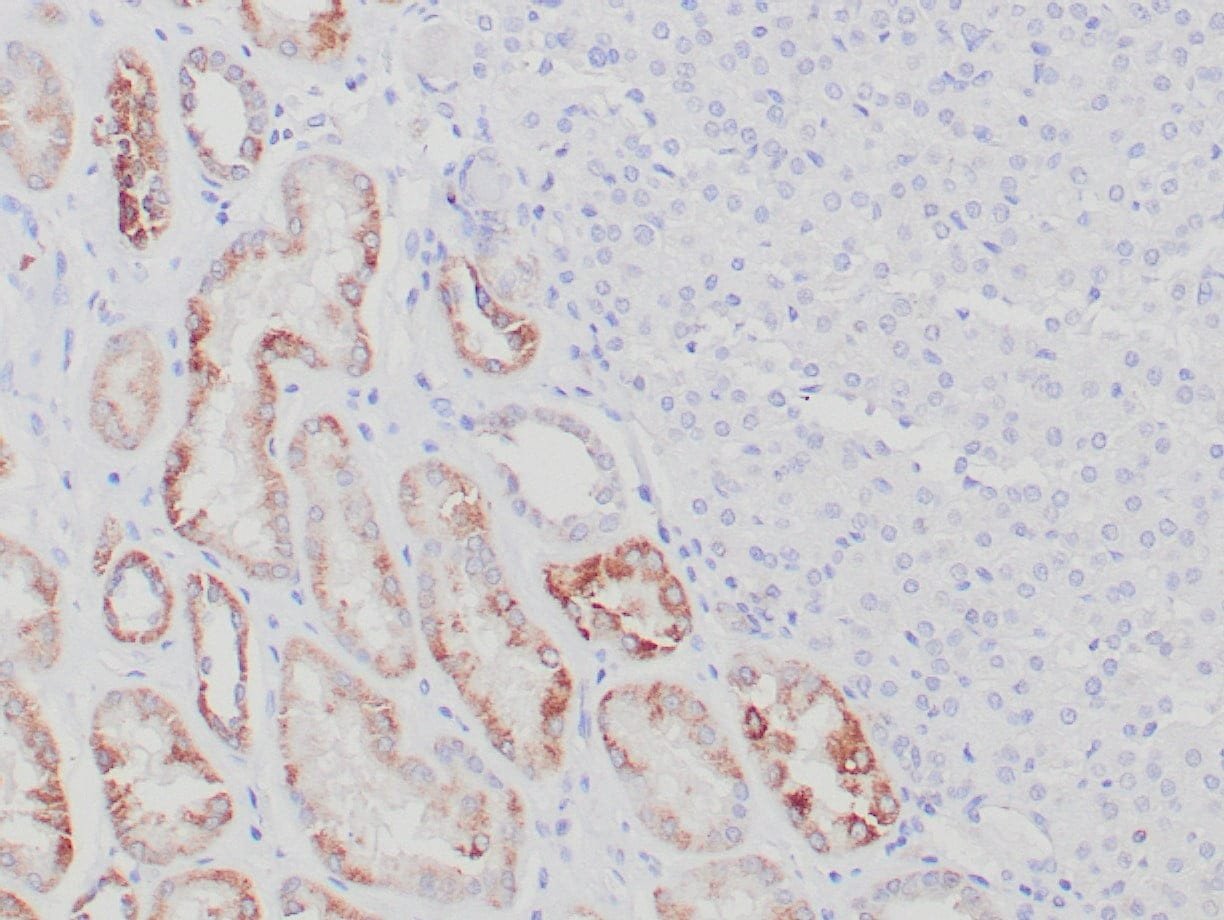 |
| Formalin-fixed, paraffin-embedded succinate dehydrogenase deficient RCC stained with anti-SDHB antibody using peroxidase-conjugate and DAB chromogen. Note the cytoplasmic staining of tumor cells |
Publications
| pmid | title | authors | citation |
|---|---|---|---|
| We haven't added any publications to our database yet. | |||
Protocols
| relevant to this product |
|---|
| IHC |
Documents
| # | SDS | Certificate | |
|---|---|---|---|
| Please enter your product and batch number here to retrieve product datasheet, SDS, and QC information. | |||
Only logged in customers who have purchased this product may leave a review.
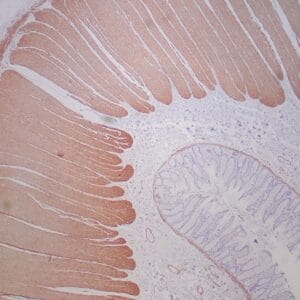
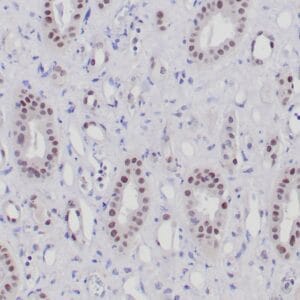
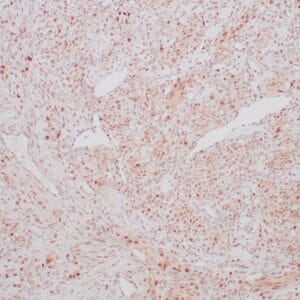

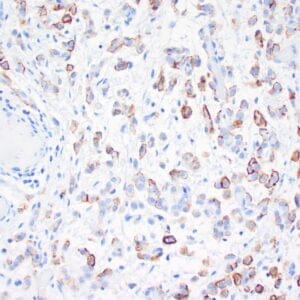
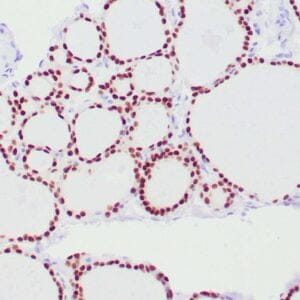
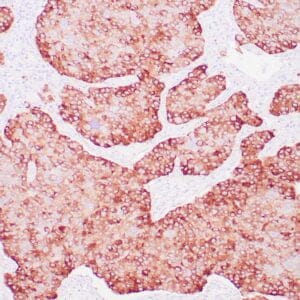
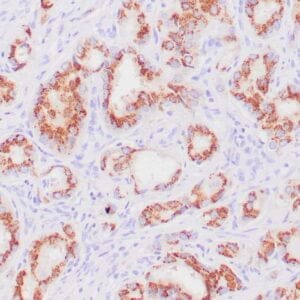

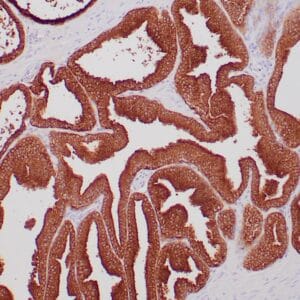
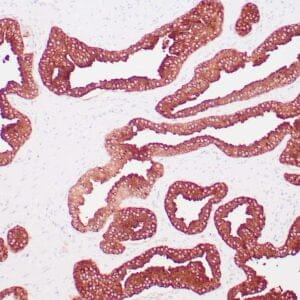
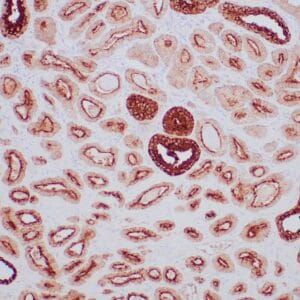
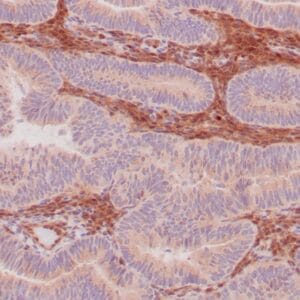
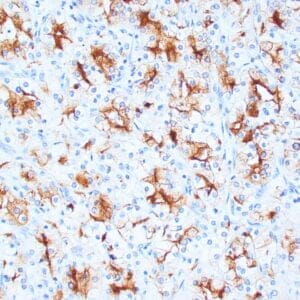
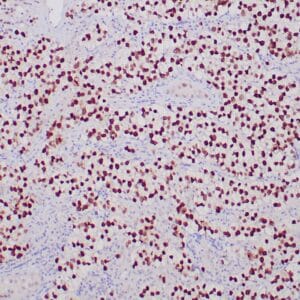
Reviews
There are no reviews yet.